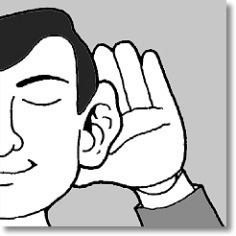 I just learned that “snafu” is a word that developed from an acronym that lost its acronym status when it joined the lexicon as a word in its own right. Snafu, which military personnel knew way ahead of civilians, comes from “situation normal, all f**ked up” Ha! Who knew? Interesting for a linguist to learn something new every day. (Related acronyms, which are still acronyms and not accepted words yet, are “tarfu” and “fubar” which you probably can figure out, especially if you’re an avid texter living in the world of acronyms.)
I just learned that “snafu” is a word that developed from an acronym that lost its acronym status when it joined the lexicon as a word in its own right. Snafu, which military personnel knew way ahead of civilians, comes from “situation normal, all f**ked up” Ha! Who knew? Interesting for a linguist to learn something new every day. (Related acronyms, which are still acronyms and not accepted words yet, are “tarfu” and “fubar” which you probably can figure out, especially if you’re an avid texter living in the world of acronyms.)
But back to the main topic – So what is that thing that snarls communication more than anything else? It’s a lack of proper listening. No surprise.
Of sure, we think we’re pretty good listeners, probably self-rate as better than average. But stop kidding yourself; we are all pretty bad listeners at best.
Why are we so bad at listening? Why does it take real effort to consciously try to listen? Well you may take heart to learn that we are all wired to be bad listeners – it’s really not your fault! But don’t bask in the excuse for long, since having an excuse doesn’t mean you should use it. We need to fight our basic wiring and strive to listen better, for better communication.
The brain is wired for efficiency, to conserve precious energy. Thinking consumes a ton of calories (ever see a fat scientist?), so in an effort to conserve the limited energy we have, the brain looks for shortcuts in thinking, patterns – “hmmm. this is sounding familiar – got it! – it lines up with this thought over here, so it must be so [jumping to conclusions to complete the pattern quickly] – pattern complete, problem solved, I can stop listening now.”
Jane: Guess what happened to me the other day!
John’s brain: [Guess what happened is sounding like a question coming so I better pay attention since it sounds like a problem is coming my way to try to solve.]
Jane: I was walking down the street and bumped into…
John: My mom, right? Because she told me she saw you yesterday. [brain: I can stop listening at this point and move on to more pressing matters.]
Jane: Well, she told me something rather interesting…
John: Yeah, yeah, I know.
Jane: Would you let me finish a complete sentence and stop interrupting!
Active listening is a keystone skill for communicating well. Keystone means foundational, aptly named as conversations are built around the rapport that develops when active listening is used.
Active listening is not just parroting back what the person says, just so they feel heard. Active listening involves building on what they said to demonstrate understanding and deepening the conversation.
Typically poor listeners fall into one of 5 bad habit categories:
Defensive listeners – everything said is against ME; they listen for self-criticism
“Sally looks good in that color.” “You’ve never mention that I look good in any color”
Stage Hog listeners – fidgeters, inattentively waiting to respond.
“Wait until you hear what happened.” “I can top your story with what happened to ME!”
Selective listeners – ask too many questions, mind racing ahead, trying to decide
Lost in Space listeners – wandering eyes and mind, not focused on the conversation
“Did you even hear a word I said?” “What? Oh, sorry… could you say it again?”
Ambush listeners – interrupters who remind you of what you said earlier that was contradictory, looking to trip you up
“I hope I can make it” “Wait, you just said you would try to come and now you sound like you’re not even going to make a real effort. So which is it?”
We all know people who are each of these bad listening styles. These categories are truly bad habits, as language and listening patterns become very habitual, automatic behavior we indulge in without even thinking about it.
Changing bad habits isn’t easy, but it can be done. Developing the good habit of active listening will serve you and your communication skills well. Are you listening?
